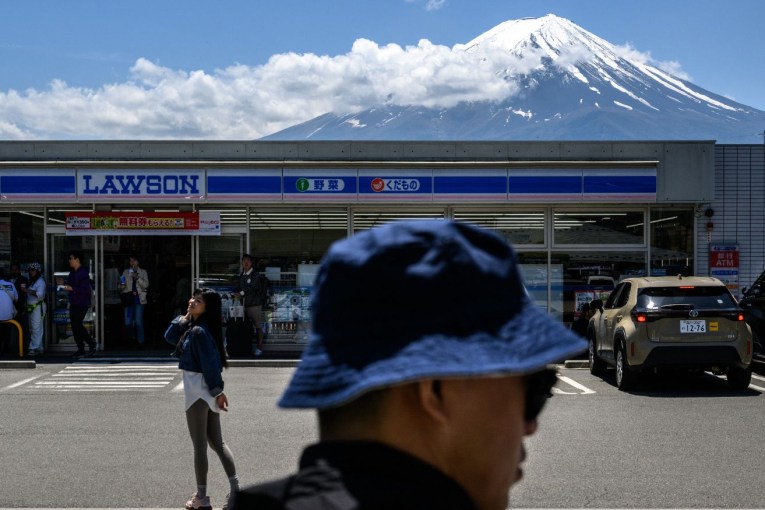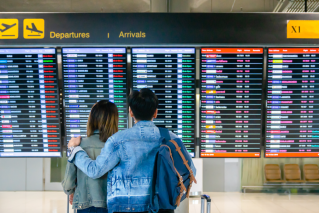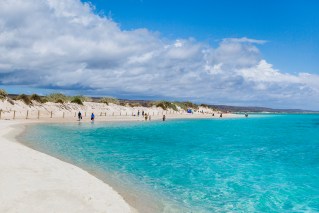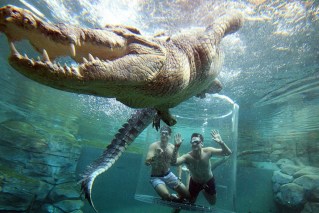What exactly is the ‘big five’? And why you might want to help change it
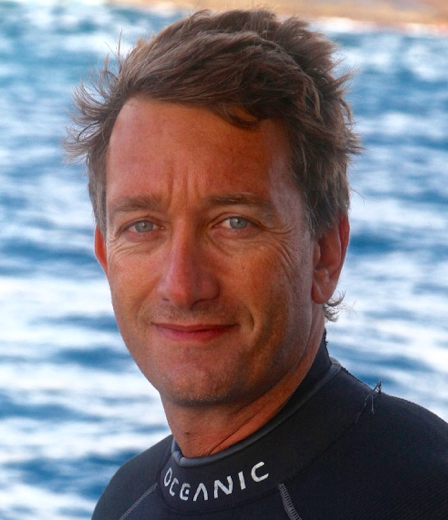
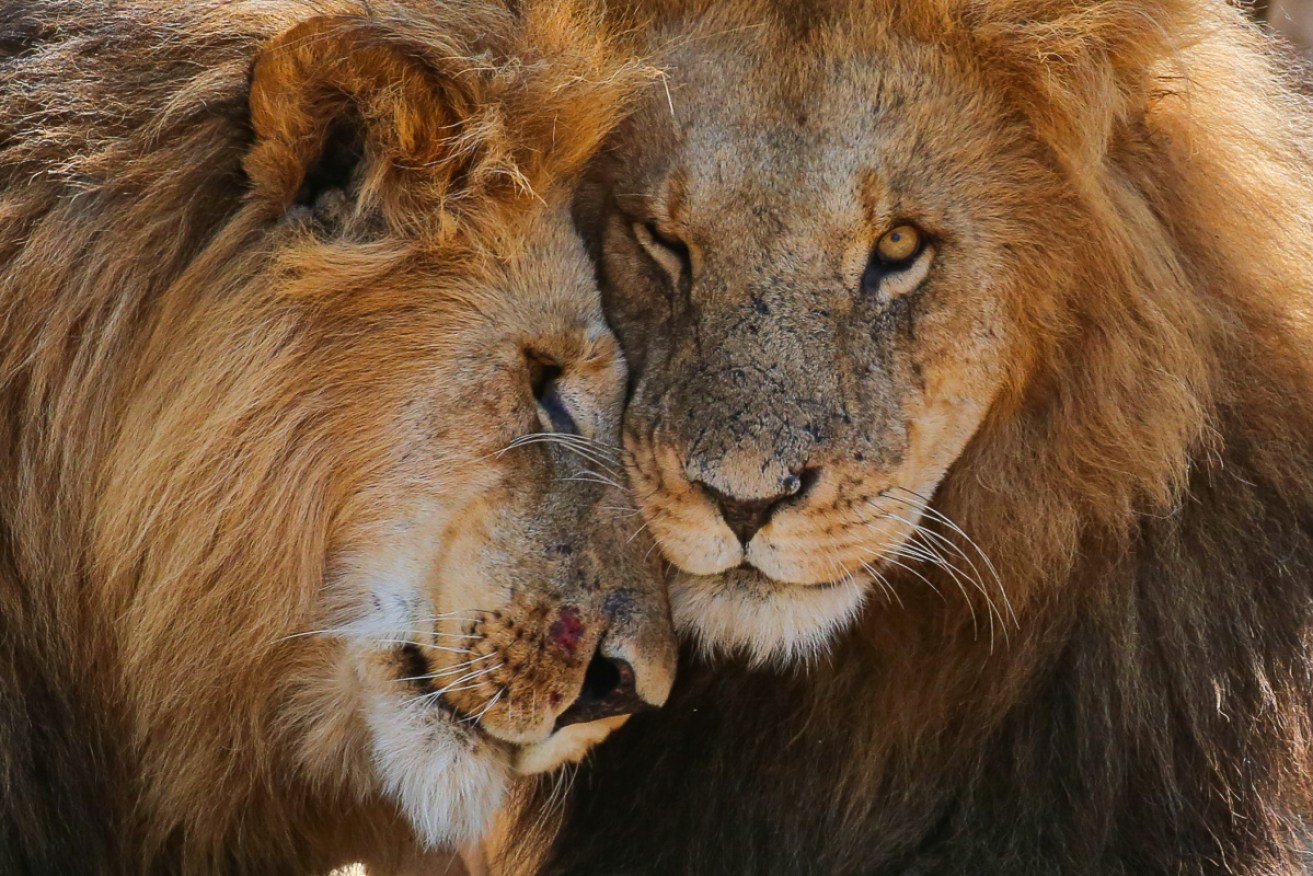
Lions are one of the original big five – and a contender for the updated version. Photo: Graham Green
A term coined in the late 1800s, “the big five” referred to the most difficult and dangerous animals hunters pursued in Africa on foot: Lion, leopard, elephant, rhinoceros and buffalo.
During the colonial era, hunters seeking them changed the face of the continent. Thousands of elephants were shot for their valuable ivory, while other big game animals, such as lions and leopards, were killed for skins or to be mounted on walls.
Big game or trophy hunting still goes on in parts of Africa, including Tanzania and South Africa. In so-called “canned hunts”, wealthy clients pay thousands of dollars to be driven around fenced privately owned reserves, picking off their bucket list of sitting targets, often including endangered species.

A baby elephant with its herd in Namibia. Photo: Marina Cano
But poaching and habitat loss are even greater threats today. In the past 50 years, the African lion population has dropped from 200,000 to about 20,000. There are now about just 7000 cheetahs left in the world.
The original big five has lost much of its meaning as many people have become opposed to hunting.
A new international campaign aims to create a “New Big 5”, targets for photographers and wildlife lovers rather than hunters. The list is to be determined by an online vote, in which we are being asked to name our favourite animals.
The New Big 5 project is supported by more than 100 of the world’s top photographers, conservationists and wildlife lovers, from Dr Jane Goodall and photographer Ami Vitale to musician Moby and actors Joanna Lumley and Djimon Hounsou, along with wildlife conservation groups including WWF, Greenpeace, Polar Bears International and the Dian Fossey Gorilla Fund, a charity named after the American naturalist murdered by poachers in Rwanda.

Gorillas, such as this silverback beauty in Congo, get a chance in the updated list. Photo: Nelis Wolmarans
Unlike the old big five, the New Big 5 will focus on wildlife photography: Shooting animals with cameras instead of guns. The initiative was created by British wildlife photographer and TND contributor Graeme Green.
“I wanted to do something positive to help the world’s wildlife,” Green says. “Wildlife photography is a way to celebrate the natural world and talk about the need to protect wildlife, with the animals still alive, rather than posing behind an animal you just shot.”
One of the project’s supporters is American photojournalist Tim Laman, who’s famous for photographing orangutans and New Guinea’s beautiful and animated bird of paradise.
“It says something positive about our world that people are now more interested in photographing wildlife than killing it,” he says.
The contenders
Green has worked on the project for nearly a year, bringing together high profile supporters. A series of podcasts features Steve Winter, Shaaz Jung, Thomas D Mangelsen, Shannon Wild and other photographers. Green even recruited comedians such as Milton Jones to come up with wildlife jokes for an educational children’s pack, including: “Always read instructions carefully – I don’t know if you’ve ever tried to fill a baboon with helium.”
Competition for the New Big 5 will be as ferocious as a lioness defending her cubs.

Polar bears just hanging out at home, in the Canadian Arctic. Photo: Thomas D. Mangelsen
“The idea of the New Big 5 is a really exciting way to get people talking about their favourite animals. It’s a great conversation starter: ‘What would your Big 5 be?’,” Green says.
“But there’s a serious message – that we need to work harder and faster to protect the world’s wildlife, before more species disappear.”
The vote includes not just wildlife from Africa but from around the world. Polar bears, tigers, wolves, koalas, orangutans and many more are in the running, as are lions, rhinos and elephants from the original big five, alongside African species that weren’t included, such as gorillas.
The results will be announced later in 2020. Says Dr Jane Goodall, founder of the Jane Goodall Institute: “There are so many incredible animals in our world, all fascinating in different ways. The animals chosen will reflect the participants’ characters as much as the qualities of the animal themselves.”

On the old list – and the new? A female leopard in Zambezi National Park. Photo: Marsel van Oosten
Art Wolfe, an American nature photographer who’s released more than 100 books, is voting for the mountain gorilla,
“Because, in the presence of a gorilla, you are looking at our ancestors,” Wolfe says. “They are so similar to us in many ways. Their expressions and interactions, especially with young babies, are so human-like.”
Swiss photographer Daisy Gilardini has chosen the polar bear.
“At the right time of the year, you can photograph the mums exiting the maternity den with the cubs, and that is absolutely stunning to witness,” she says.
Award-winning South African wildlife photographer Greg du Toit selected the mighty African lion.
“They exude a confident type of supreme power that still, after all these years, excites me. They are an intoxicating combination of regality and stupidity as they play the role of both king and jester.”
There are plenty of surprises in the choices too, including obscure animals, from the fossa to the gerenuk.
- Vote here

Meerkats in the Kalahari: Undeniably cute, but are they “big” enough? Photo: Jen Guyton
Ami Vitale, one of the key photographers behind the project, is a former war correspondent who covers wildlife stories for National Geographic magazine.
“The power of one individual is real. I see it over and over in the stories I’ve worked on,” she says.
Nick Brandt, an English photographer known for his beautiful yet bleak work, voices similar sentiments.
“What we’ve seen with Greta Thunberg – one little girl starting alone with a placard outside Swedish parliament – shows that a pretty rapid transformation of certain populations is possible.
“We all need to keep doing whatever we can, however small. If everyone is doing something, that’s better than doing nothing.”
Or, as Art Wolfe puts it, the New Big 5 is “one more brick in a wall that we’re constructing to save many of the creatures around the Earth”.
Vote here, donate or get involved in the project, by visiting newbig5.com
